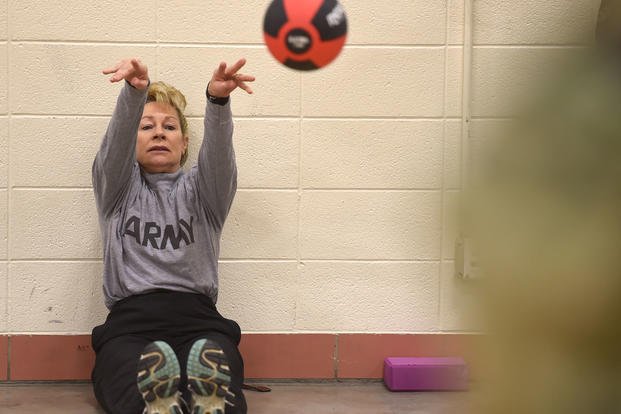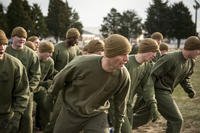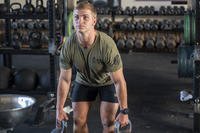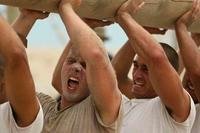Maybe it is 15 years of war or understanding the physiology and occupational health of the military athlete better over the past decade, but training the tactical athlete has evolved significantly. Big changes in the military do not happen overnight, especially with a PT program that is 30-40 years old. Think of the Department of Defense like an elephant. You may be able to clip its toenails, but getting it to change direction requires a little more time and effort.
The transition from the standard health and fitness test the military has used for decades has evolved slowly, with minor changes in standards and exercises and testing new exercises for men and women. Even these standard changes take time to implement.
Here are some of the changes being tested and implemented within the Army, U.S. Marine Corps and special-ops programs:
Army Occupational Physical Assessment Test
The OPAT is considered the ASVAB test of physical conditioning. The score you receive on the exercises (long jump, seated power throw, deadlift, beep test shuttle run) will determine what job you are eligible for in the Army.
The harder, more physical jobs, like armor, artillery and infantry, require a higher score on the test. Army recruits in boot camp and transitioning MOS's will have to perform this test.
The creation of an Army combat fitness test (ACFT) also is being considered and developed. The standard Army physical fitness test is still push-ups, sit-ups, and a two-mile run and likely will remain for the foreseeable future, but new testing protocols and exercises will help soldiers train in a different way for combat readiness. Replacing the standard APFT with a new Army PFT and Army CFT is under discussion. (Note: The Army CFT replaced the APFT in October 2020.)
Marine Corps Combat Fitness Test
The USMC not only is making changes to the USMC PFT (pull-ups, crunches, three-mile run) with the addition of push-ups as an option in place of pull-ups and planks instead of crunches. It also is adding the combat fitness test as part of the testing protocol for Marines. The Marines take the USMC PFT and the USMC CFT every six months. The CFT consists of the following: an 800-meter timed run in boots, pants and T-shirt; lifting a 30-pound ammo can as many times as possible from shoulder to head in two minutes; and a 300-yard combat conditioning course that involves:
- Sprinting 10 yards, then a high crawl for 15 yards and grabbing an "injured Marine."
- Dragging the casualty for 10 yards while moving through cones and changing direction often.
- Fireman-carrying and dragging the casualty fast for 65 yards.
- Carrying two 30-pound ammo cans for 75 yards while changing direction through a series of cones.
- Throwing a dummy grenade 22 1/2 yards and aiming for the marked target circle.
- Doing five push-ups, then carrying two 30-pound cans and sprinting to the finish line.
Navy SEAL Tactical Athlete Program Test
The Navy SEAL program historically has used the 500-yard swim, push-ups, sit-ups, pull-ups and 1.5-mile test to get selected into the program. For decades, active-duty SEALs used a modified version where the swim was increased to 800 meters and the run was increased to three miles. It was dissolved more than a decade ago.
However, now the Navy SEAL TAP is the new program being implemented throughout the SEAL community. It consists of the following events:
- Standing long jump, which is a broad jump with both feet leaving and landing at the same time.
- Pro agility test, a 5-10-5-yard shuttle run totaling 20 yards and three directional changes.
- Body-weight bench press for max repetitions.
- 25-pound pull-up for maximum repetitions.
- Deadlift (+1.5x your body weight) one rep, but can you build up to twice or more times your body weight?
- 300-yard shuttle run (6 x 50-yard shuttle runs)
- Three-mile run for time.
- 800-meter swim for time.
This or a modified version is the future of the SEAL Team PT test.
Army Ranger Athlete Warrior Program
The Ranger 4.0 program is a comprehensive training program and has four main components to assess not only the Ranger's abilities but also educate the tactical athlete as well. The focus of the RAW 4.0 are the following areas:
Functional fitness: The focus of the fitness elements are strength, endurance and movement skills (mobility) and involve such exercises as the following:
- Pro agility test: This is a short sprint that includes changing directions every 5, 10, and 5 yards -- a total of 20 yards of running with three 180-degree directional changes. Also known as the 5-10-5 agility test.
- Standing long jump: Jump forward from a standing position.
- Deadlift 225 pounds for max repetitions, maxing out at 30 reps.
- Dead-hang pull-ups (no kipping) for maximum effort and no added weight.
- On a cadence of a metronome, perform push-ups until you cannot keep the pace of the device.
- Heel claps, also known as kip-ups
- 300-yard shuttle run
- Ranger physical assessment test (RPAT): This is essentially a three-mile run in gear with a variety of obstacles, such as the rope climb, caving ladder climb, wall climb, weight carry and sprints.
Performance nutrition: Teaching about nutrient needs of the Ranger before, during and after mission training is the focus of this section.
Sports medicine: Injury prevention, early interventions and access to doctors and physical therapists.
Mental toughness: Making tough workout events that become mental challenges and understanding the optimal performance state, both mentally and physically, is the stated goal of this non-tangible attribute that every tactical professional seeks.
Air Force Battlefield Airmen Fitness Test
The Air Force has created a tactical fitness test that focuses on functional fitness that Air Force battlefield airmen will perform during selection and while in active-duty Air Force Special Operations units in addition to the physical ability and stamina test (PAST) (see the Air Force Tactical Fitness Test).
It has been only about 10 years since the term tactical athlete took hold, and tactical fitness became an actual genre of fitness that yielded scientific studies. Combined with medical screening, the standard fitness test still is useful as a health and wellness test that indicates if a member is healthy enough to be in the military. The changes moving forward will build stronger military members who can withstand the unique challenges of the day-to-day job requirements of the profession better.
When I joined the military in the late 1980s and later the SEAL community, I was amazed that my high school football team and college sports teams had better access to nutrition, training, and physical therapists and athletic trainers than the military special-ops communities did. Treating our military members as tactical athletes is the key. Also, our military, police and firefighters need to treat themselves like athletes as a whole if we want to see the results of years of study, labor and testing to create better training programs for our military members.
Stew Smith is a former Navy SEAL and fitness author certified as a Strength and Conditioning Specialist (CSCS) with the National Strength and Conditioning Association. Visit his Fitness eBook store if you're looking to start a workout program to create a healthy lifestyle. Send your fitness questions to stew@stewsmith.com.
Want to Learn More About Military Life?
Whether you're thinking of joining the military, looking for fitness and basic training tips, or keeping up with military life and benefits, Military.com has you covered. Subscribe to Military.com to have military news, updates and resources delivered directly to your inbox.


















